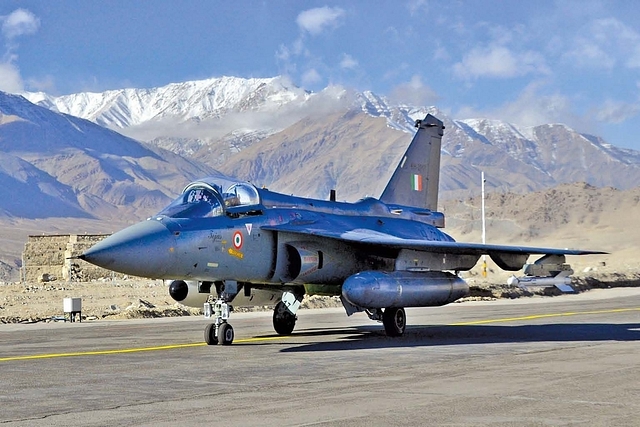SOURCE: RAUNAK KUNDE / NEWS BEAT / IDRW.ORG

India’s Hindustan Aeronautics Limited (HAL) and the Indian Air Force (IAF) are engaged in discussions that could potentially lead to the procurement of an additional 100 Tejas Mk1A fighter jets. These new aircraft are expected to come with a host of improvements aimed at addressing technical obsolescence in the system and increasing indigenous content.
Unlike the previous order of 73 Tejas Mk1A fighters placed in 2021, the upcoming batch is set to feature a significantly higher level of indigenous content. This move aligns with India’s commitment to bolster its domestic defence manufacturing capabilities and reduce dependency on foreign suppliers.
One of the noteworthy additions being considered is the inclusion of an Infrared Search and Track (IRST) system. The Tejas Mk1A fighters from the 2021 order lacked this critical system, but India is already developing an IRST system for the LCA-AF Mk2 program. Talks are underway between the IAF and HAL to determine if the IRST system can be incorporated into the 100 units to be ordered, as India’s own IRST system is in the advanced stages of development.
To ensure that the new Tejas Mk1A fighters remain technologically competitive, HAL plans to address technical obsolescence in the system. This includes replacing several Line Replaceable Units (LRUs) that were previously procured from abroad with indigenous alternatives. By doing so, India aims to reduce its dependence on foreign suppliers for critical components, enhancing self-reliance in defence manufacturing.
Another significant upgrade in the pipeline involves the development of a new nose cone for the Tejas Mk1A program. The current nose cones are supplied by British manufacturers, but HAL intends to develop a homegrown solution, further contributing to the indigenization of the aircraft.
The 100 Tejas Mk1A fighter jets, with their enhanced indigenous content and technical improvements, are expected to be a valuable addition to the IAF’s fleet. Deliveries are anticipated to commence from 2028 onwards, providing a timely boost to India’s air defence capabilities.
NOTE : Article cannot be reproduced without written permission of idrw.org in any form even for YouTube Videos to avoid Copy right strikes